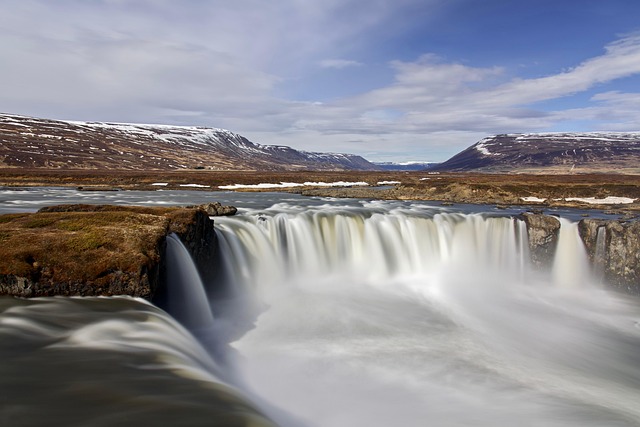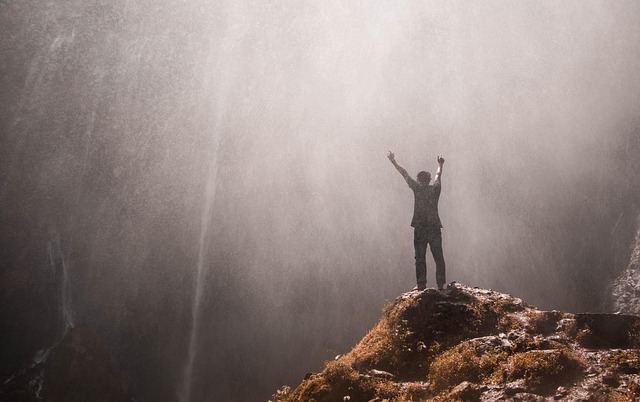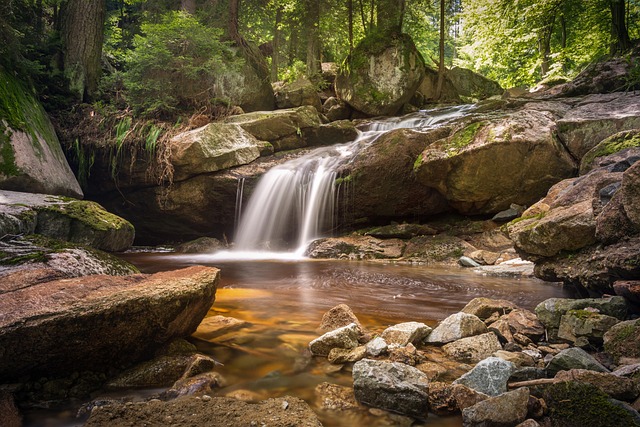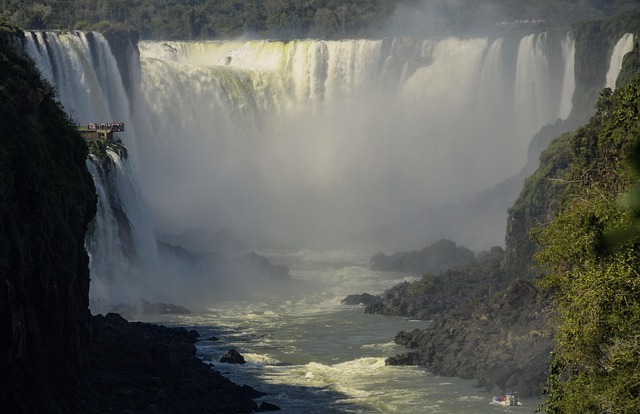Designing and maintaining an eco-friendly pond and waterfall system prioritizes both aesthetic appeal and environmental sustainability. Key principles include using natural materials, efficient water circulation, and native plant species. This approach fosters a thriving ecosystem that supports local wildlife while minimizing maintenance. Proper waste disposal, water monitoring, and the use of eco-friendly products ensure long-term ecological health. By incorporating native plants and aquatic life, these ponds promote biodiversity without invasive exotic species. Regular maintenance, including cleaning and pH adjustments, is vital to preserve water quality and prevent costly repairs, ensuring a harmonious symphony of beauty and ecological balance.
“Elevate your outdoor space with professional pond and waterfall design, combining aesthetics with ecological responsibility. This comprehensive guide explores the core principles of eco-friendly pond creation, from understanding sustainable design practices to integrating native flora and fauna. We delve into the essential components of a resilient waterfall system, offering expert tips for long-term maintenance and care. Discover how to create a harmonious aquatic environment that thrives on nature’s terms.”
- Understanding Eco-Friendly Pond Design Principles
- Key Components of a Sustainable Waterfall System
- Incorporating Native Plants and Aquatic Life
- Maintenance and Longevity: Tips for Professional Care
Understanding Eco-Friendly Pond Design Principles

In the realm of professional pond and waterfall design, embracing eco-friendly principles is a game changer that fosters harmony between aesthetics and environmental sustainability. An eco-friendly pond is more than just an attractive landscape feature; it’s a living ecosystem that supports local wildlife and promotes water quality. Designers must consider natural materials, efficient water circulation, and native plant species to create sustainable oases. By leveraging organic elements like gravel and rocks for filtration, and planting indigenous aquatic plants to prevent erosion, these designs mimic nature while minimizing maintenance.
This approach emphasizes the importance of navigating the pond’s lifecycle with care, from construction to ongoing management. Eco-conscious practices include proper waste disposal, water monitoring, and using environmentally friendly products to maintain balance without introducing harmful chemicals. Such thoughtful design and stewardship ensure that ponds and waterfalls not only enhance outdoor spaces but also contribute positively to their surrounding environments, creating a symphony of beauty and ecological health.
Key Components of a Sustainable Waterfall System

A sustainable waterfall system is an artful blend of aesthetics and environmental responsibility. At its core, it consists of several key components that work in harmony to create a vibrant, eco-friendly pond ecosystem. One such element is the choice of plants, both aquatic and terrestrial, which not only add visual appeal but also play a crucial role in maintaining water quality by reducing nutrients and providing habitat for local wildlife.
Another vital component is the use of natural materials like stone and wood for the waterfall structure itself. These materials are durable, visually appealing, and help to mitigate erosion while allowing water to flow naturally. Efficient pumping systems, designed with energy conservation in mind, are also essential, as they ensure a balanced water circulation without excessive energy consumption. Incorporating an eco-friendly pond filter further enhances sustainability by clarifying the water and maintaining optimal conditions for the entire ecosystem.
Incorporating Native Plants and Aquatic Life

When designing an eco-friendly pond, incorporating native plants and aquatic life is a crucial step in creating a harmonious and sustainable ecosystem. Native species are adapted to local conditions, reducing the need for excessive maintenance and artificial inputs. They provide food and shelter for wildlife, enhancing biodiversity and contributing to a balanced environment. For example, choosing native aquatic plants like water lilies or pondweeds not only adds aesthetic beauty but also supports local insect and bird populations.
These plants play a vital role in maintaining water quality by absorbing nutrients and reducing algae growth. Additionally, introducing native fish species can create a thriving aquatic community without the need for invasive exotic fishes. This approach aligns with the goal of an eco-friendly pond, fostering a natural balance that is both visually appealing and ecologically sound.
Maintenance and Longevity: Tips for Professional Care

Proper maintenance is key to ensuring your pond and waterfall system remains beautiful and functional for years to come. Regular cleaning, including removing leaves and debris, is essential to prevent blockages and maintain water quality. Additionally, checking and adjusting the pH levels, as well as monitoring for any signs of algae or pests, will keep your eco-friendly pond thriving.
Professional care involves scheduling routine inspections and servicing. This includes trimming plants, cleaning filters, and ensuring all equipment is functioning optimally. By investing in regular maintenance, you protect the longevity of your water features, prevent costly repairs, and create a healthier environment for aquatic life.
Professional pond and waterfall design combines aesthetic beauty with ecological responsibility. By understanding eco-friendly principles, integrating sustainable components like native plants and aquatic life, and prioritizing proper maintenance, you can create an eco-friendly pond that enhances your landscape while supporting local ecosystems. These practices ensure not only a beautiful, long-lasting feature but also contribute to the overall health of our environment.
